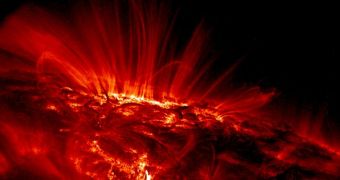Currently the Sun is going through a period of low activity, with few or no sunspots appearing on its surface. So far nobody is complaining, albeit it does seem that the low activity period has extended a bit too long and has even fooled the scientists into uncertainty regarding whether or not a new solar cycle has begun or the old one is still influencing the Sun. However, such long periods of inactivity may in fact be completely normal for the Sun, said researchers at the international solar conference at Montana State University, which took place earlier this month.
"It continues to be dead. That's a small concern, a very small concern", said Saku Tsuneta of the National Astronomical Observatory of Japan, program manager for the Hinode solar mission.
JAXA's Hinode space telescope administered by Japan in collaboration with the US and the UK is making continuous observations on the surface of the Sun with the three telescopes it carries on board. One of these cameras operates in the X-ray wavelengths. Hinode is placed in a polar orbit around Earth at an altitude of 690 kilometers, allowing it to make a complete rotation every 95 minutes.
Minimum solar activity occurs when the Sun changes cycles, event which takes place every 11 years or so. Between such periods of inactivity the Sun manifests violent phenomena such as sunspots, solar flares and solar eruptions, some powerful enough to damage satellites in orbit around Earth or even ground based infrastructure. The last cycle peaked in activity in 2001, while the next activity peak is expected to take place sometime in 2012.
"It's a dead face", said Tsuneta while relating to the appearance of the Sun.
Solar physicists may not be able to predict exactly when the next activity peak is going to take place, although long-term observations could help them understand when the next long period of inactivity would settle in. Such a period occurred between 1650 and 1700 when the Sun appeared to present no sunspots at all. Curiously enough, the clime on Earth responded accordingly to this through a small 'ice age'.
For all we know, the Sun could resume its activity in just a few days. So in order to make sure that contact with Hinode is not lost in case of high solar activity, researchers added supplemental ground stations in India, Norway, Alaska and the South Pole to relay Hinode's signals.
Since operating the Hinode satellite cannot be carried by one country alone, an international collaboration had to be established ever since the satellite was launched into space nearly two years ago.

 14 DAY TRIAL //
14 DAY TRIAL //